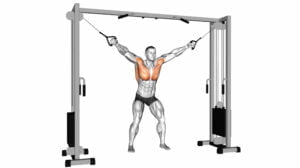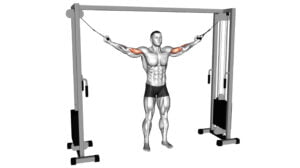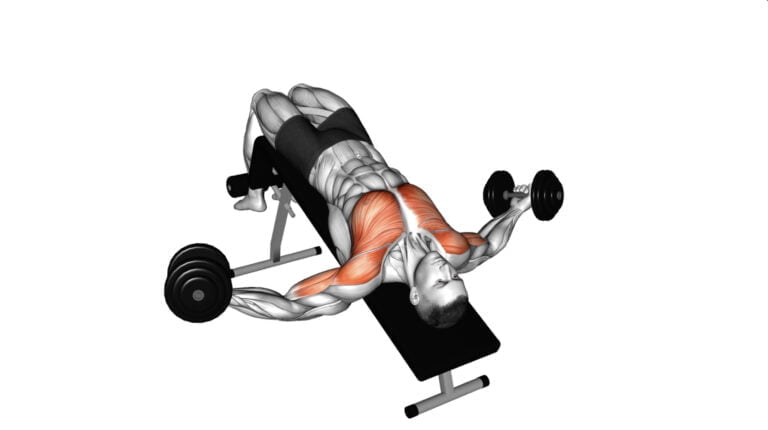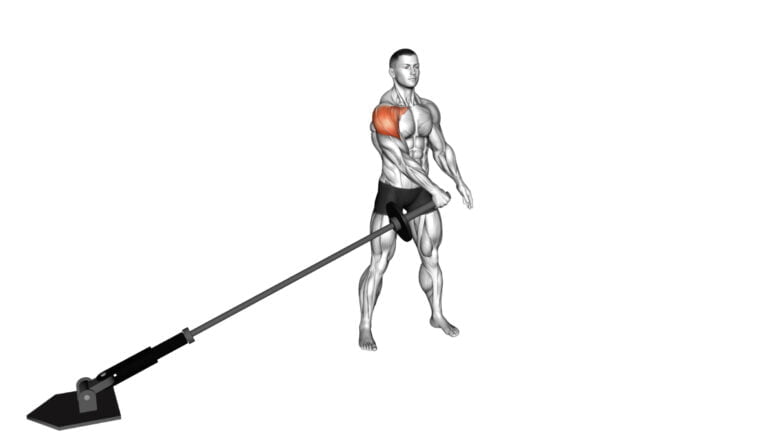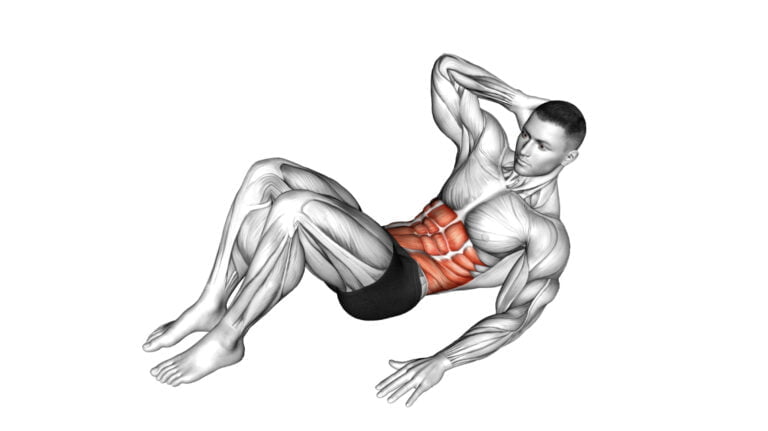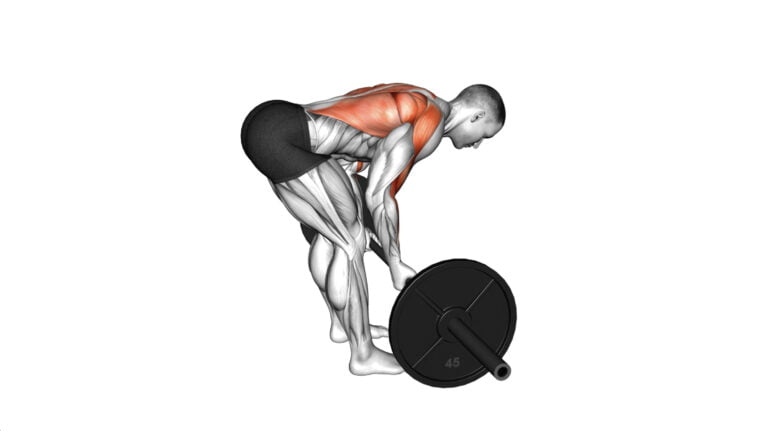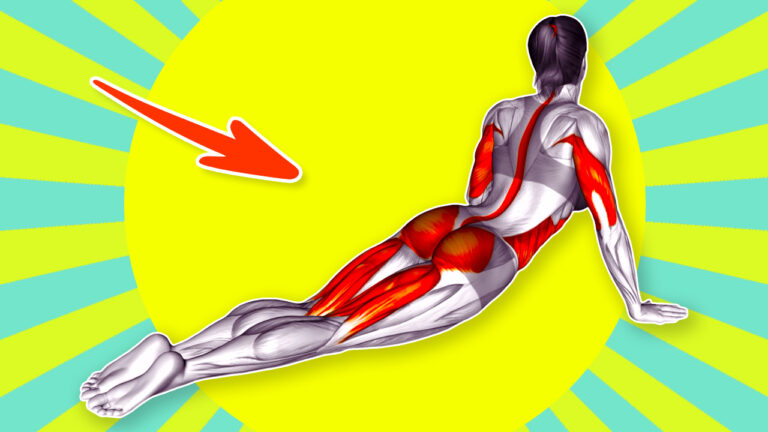10 Cable Lat Exercises To Strengthen And Sculpt Your Back
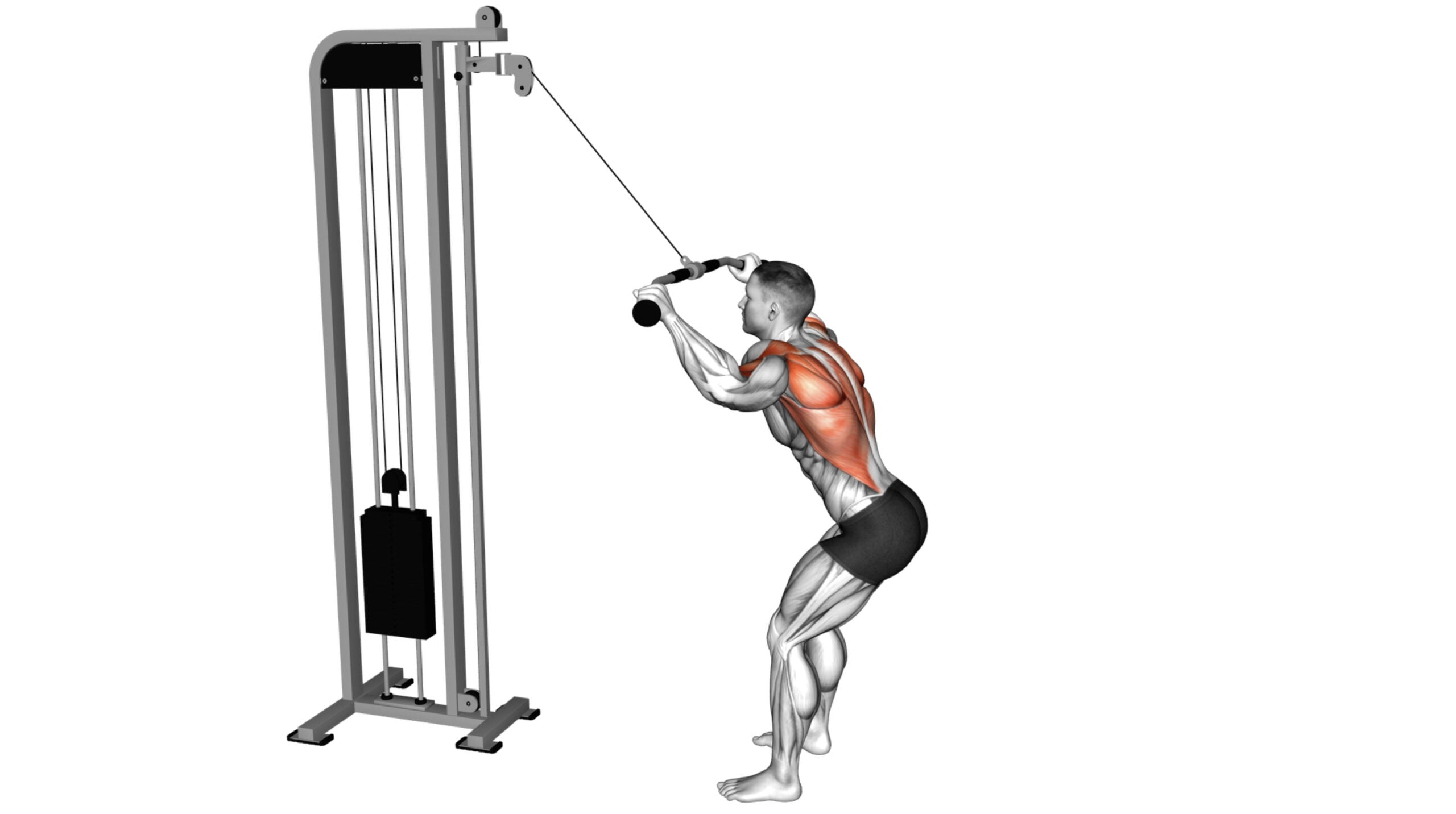
Are you tired of struggling to build a strong and sculpted back? You’re not alone. Many people find it challenging to target and strengthen their back muscles effectively. As a certified personal trainer with over 10 years of experience in strength training, I understand the importance of incorporating cable lat exercises into your workout routine for maximum results.
Did you know that cable lat exercises are essential for targeting the latissimus dorsi, teres major, and other key muscles in your back? These exercises can help improve your posture, enhance shoulder stability, and even boost overall upper body strength. Whether you’re a beginner or an experienced lifter, mastering these 10 cable lat exercises will take your back training to the next level. So let’s dive into the details and learn how these exercises can benefit you!

Key Takeaways
- Cable lat exercises focus on strengthening the back muscles, enhancing posture, and boosting upper body strength. These workouts target the latissimus dorsi, teres major, and rhomboid muscles crucial for a sculpted back.
- Using cable machines offers continuous tension throughout exercises, engaging more muscle fibers than free weights. This leads to efficient strength building and muscle growth while allowing various movements for targeted muscle work.
- Proper form in cable lat exercises prevents injuries and ensures that specific back muscles are effectively engaged. Maintaining proper posture and controlling weight movement maximizes exercise benefits.
- Progressively challenging your muscles by adjusting weights or reps improves overall strength and muscular development. This gradual increase helps avoid injury while encouraging consistent gains in both strength and aesthetics.
- Incorporating a variety of cable lat exercises into your workout routine supports balanced muscle growth, enhances functional movements in daily activities, and contributes to achieving a strong, well-defined back.
Importance of a strong and sculpted back
A strong and sculpted back is crucial for more than just aesthetic appeal. It serves as the foundation for upper body strength, supporting your shoulders, arms, and even aiding in powerful deadlifts.
Engaging in cable lat exercises targets vital muscles like the latissimus dorsi, teres major, and rhomboid major. These workouts not only enhance muscle growth but also improve posture by aligning the spine correctly.
Building a resilient back through targeted exercises can prevent injuries that may occur from daily activities or other forms of exercise. This approach to training ensures balance in muscle development between the front and back of your body, reducing the risk of overuse injuries commonly seen with imbalanced workout routines.
Focusing on strengthening these essential muscles will support overall shoulder health while promoting functional movement across various physical activities.
Benefits of cable exercises for back training

Cable exercises offer a unique advantage for back training by providing constant tension throughout the movement. This continuous resistance helps to engage more muscle fibers, particularly in the lats and rear delts, leading to efficient strength building and hypertrophy.
The smooth motion of cable machines also allows for a greater range of motion compared with free weights, enabling targeted work on specific areas of the back.
Incorporating cable workouts into your routine enhances muscle activation through various angles that are difficult to achieve with traditional weights alone. Exercises like lat pulldowns and seated rows can be adjusted quickly for different heights and grips, making it easy to focus on weaknesses or imbalances in the back muscles.
This adaptability supports better posture, stronger lifts, and an overall sculpted physique by effectively working both major and minor upper body muscles.
10 Best Cable Lat Exercises to Strengthen and Sculpt Your Back
Strengthen and sculpt your back with these effective cable lat exercises designed to target and tone your lat muscles, helping you achieve a strong and defined physique. Ready to take your back workouts to the next level?.
1. Cable Reverse-grip Straight Back Seated High Row
To perform the Cable Reverse-grip Straight Back Seated High Row, grab the handle with your palms facing up (supinated grip) and sit down on the bench. Make sure your back is straight and feet are planted firmly on the ground.
Pull the handle towards your lower abdomen, engaging your lat muscles deeply as you squeeze your shoulder blades together at the end of the motion. This exercise targets your lats and also works wonders for strengthening your biceps and improving shoulder blade retraction.
Aim to keep a steady pace, focusing on muscle contraction rather than speed. Your elbows should move straight back alongside your body, ensuring they don’t flare out to maintain isolation of the target muscles.
Adjusting weight accordingly allows for progressive overload without compromising form, essential for those aiming to enhance their back strength and aesthetics significantly.
2. Cable Reverse Grip Pulldown
Moving from the seated high row, we shift our focus to the Cable Reverse Grip Pulldown. This exercise targets your latissimus dorsi muscles but with a unique twist by having your palms face towards you.
Engaging in this movement helps enhance shoulder joint stability and supports rotator cuff health.
You’ll grasp the bar with a shoulder-width grip, palms facing you. Pull the bar down smoothly towards your chest while keeping your elbows close to your body. This action not only works on strengthening your back but also involves biceps and rear deltoids for a compound exercise effect.
The emphasis on external rotation of the shoulders during this pulldown variant encourages better posture and muscle balance across the upper body.
3. Cable Rear Pulldown
Position yourself in front of the cable machine with a wide bar attached to the high pulley. Grasp the bar with an overhand grip, slightly wider than shoulder-width apart. Sit down on the bench and pull the bar down towards your upper chest by squeezing your shoulder blades together.
Hold for a moment at peak contraction before slowly returning to the starting position.
Engage your back muscles throughout the movement and avoid using momentum to pull down the weight. Keep your chest up, shoulders back, and maintain a slight arch in your lower back while performing this exercise to maximize its effectiveness in targeting your lats.
4. Cable Pushdown (straight arm)
Engage your triceps and lats with the cable pushdown (straight arm) exercise. Stand in front of a cable machine, grasp the bar with palms facing down, and keep your arms straight as you push the bar downward.
Focus on squeezing your triceps at the bottom of the movement before slowly returning to the starting position. This exercise targets your lats and triceps specifically, helping to build strength and definition.
Remember to control the weight throughout each rep for maximum effectiveness and safety.
5. Cable Palm Rotational Row
To perform the Cable Palm Rotational Row, stand facing a cable machine with a single-grip attachment at chest height. Grasp the handle with an overhand grip and step back to create tension in the cable.
Keeping your core engaged and back straight, pull the handle towards your torso while rotating your wrist so that your palm faces upward at the end of the movement. Slowly return to the starting position and repeat for the desired number of repetitions to effectively target your lats, rhomboids, and biceps.
By incorporating this exercise into your routine, you can enhance shoulder stability and strengthen rotational muscles while promoting balanced muscle development in your back. This movement also engages multiple joint actions, providing a comprehensive workout for upper body strength.
6. Cable Parallel Grip Lat Pulldown on Floor
Position yourself under the cable machine with a parallel grip handle attached. Make sure to sit on the floor with your knees slightly bent and feet flat. Grab the handles with an overhand grip, keeping your back straight and chest up.
Pull the handles down towards your chest, squeezing your shoulder blades together at the bottom of the movement. Slowly release and extend your arms back to starting position.
This exercise targets your latissimus dorsi muscles along with engaging other upper body muscles such as biceps and rhomboids. The parallel grip provides a neutral hand position which can help reduce wrist strain compared to other variations of lat pulldowns.
7. Cable one arm twisting seated row
In the cable one arm twisting seated row, sit facing the machine with your chest up and core engaged. Grasping the handle with one hand, initiate the movement by pulling your elbow back and rotating your torso to effectively target your lats.
Keep a controlled pace throughout the exercise to maximize muscle engagement.
Now let’s move on to mastering another effective cable lat exercise – Cable Single Arm High Row with Chest Support.
8. Cable Single Arm High Row with Chest Support
To perform the Cable Single Arm High Row with Chest Support, sit on a bench with your chest against the support pad. Grab the handle and pull it towards your rib cage, keeping your elbow close to your body.
Slowly return to the starting position, feeling the squeeze in your lat muscles as you extend your arm.
This exercise effectively targets the lats while providing stability and support for proper form. It also allows for unilateral work, addressing any strength imbalances between both sides of the body.
9. Cable Split Stance Single Arm Row
Transitioning from the Cable Single Arm High Row with Chest Support, the Cable Split Stance Single Arm Row is a dynamic exercise that targets the lats, biceps, and upper back muscles.
To perform this exercise effectively, grasp the cable handle and adopt a split stance position with one foot forward and one foot back for stability. Keep your core engaged and pull the handle towards your hip in a controlled manner while maintaining proper form throughout.
Engage your lat muscles as you bring the handle close to your body, then slowly return to the starting position without allowing momentum to take over. This exercise helps improve unilateral strength and stability while promoting balanced muscle development in both sides of the back.
10. Cable Standing Lat Pulldown
Transitioning from the Cable Split Stance Single Arm Row, the Cable Standing Lat Pulldown is an effective exercise for targeting the latissimus dorsi muscles. Stand facing the cable machine with feet shoulder-width apart, grab the bar with an overhand grip slightly wider than shoulder width.
Pull the bar down towards your chest while keeping your elbows close to your body and squeezing your shoulder blades together at the bottom of the movement for maximum activation.
Engage your core during each repetition and focus on controlling both phases of the movement to ensure proper form and maximize muscle engagement. This exercise not only strengthens but also sculpts the back, helping you achieve a balanced and strong physique.
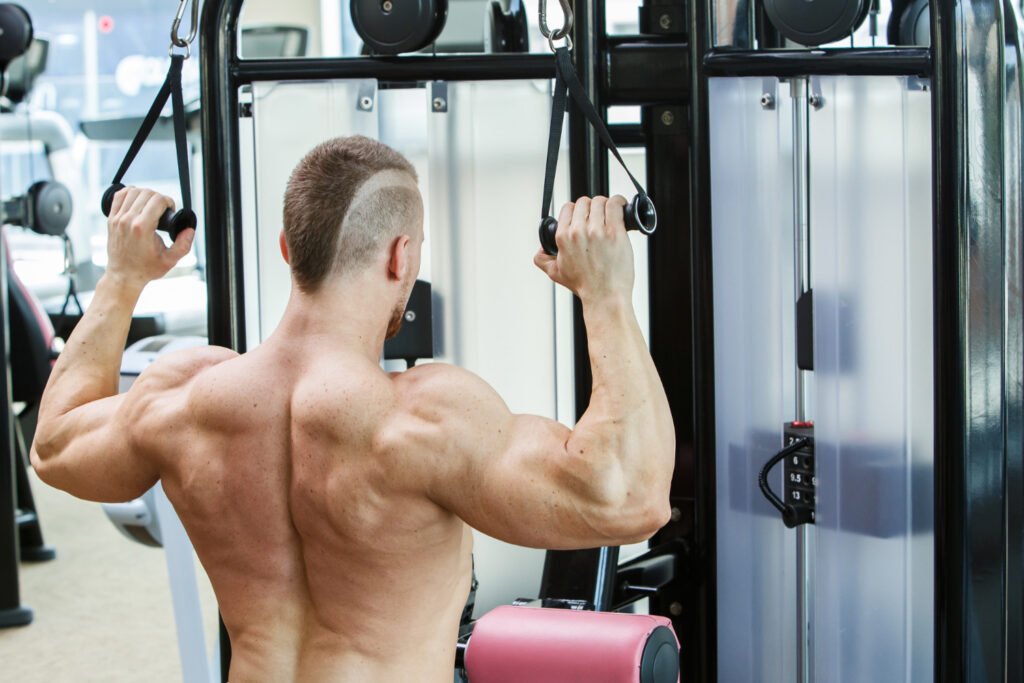
Recommended Sets And Reps
Transitioning from the Cable Standing Lat Pulldown to setting your recommended sets and reps for these exercises, it’s crucial to tailor your approach based on your fitness level. For beginners, start with 2-3 sets of 8-12 repetitions per exercise, using a moderate weight that allows proper form.
Intermediate lifters may benefit from 3-4 sets of 8-10 reps at a slightly heavier weight. Advanced individuals can challenge themselves with 4-5 sets of 6-8 reps at a weight that presents a significant challenge without sacrificing technique or safety.
It’s important to gradually increase weights as you progress and always prioritize quality over quantity in each set and rep.
Proper Form and Technique for Cable Lat Exercises
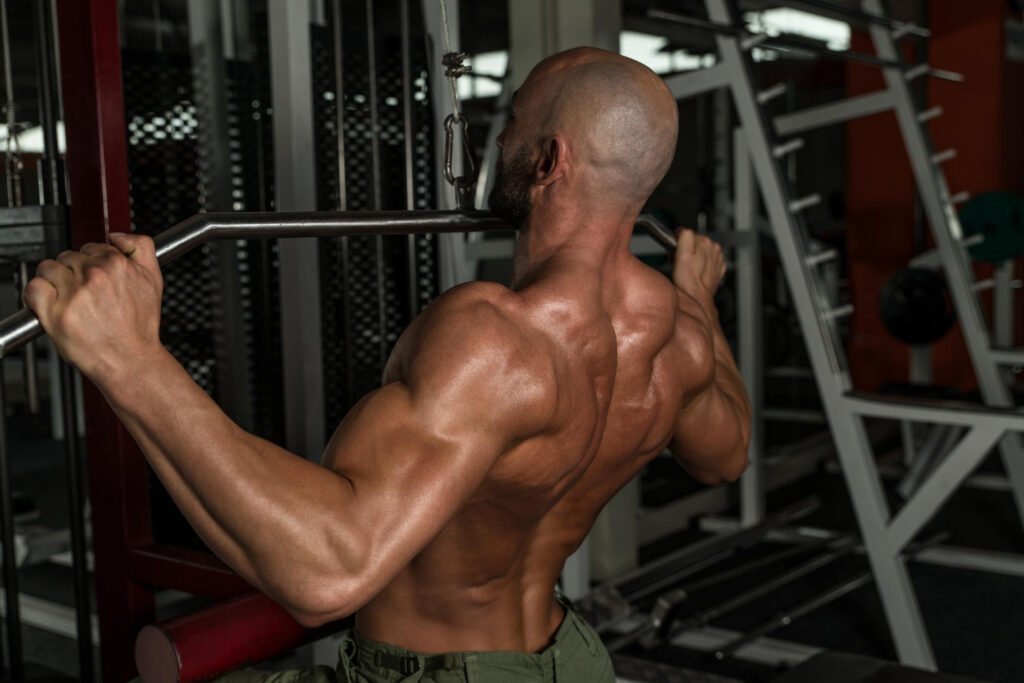
Engage your lat muscles by keeping your back straight and chest up while performing cable lat exercises. Maintain a slight bend in your elbows and focus on the full range of motion for each repetition to maximize effectiveness.
For more details on proper form and technique, delve deeper into the article.
Importance of maintaining proper form
Maintaining proper form during cable lat exercises is crucial for targeting the back muscles effectively while preventing strain and injury. By engaging your core, keeping your shoulders down and back, and using controlled movements, you can optimize muscle activation and minimize the risk of overloading other body parts.
This not only enhances the benefits of each exercise but also contributes to long-term back health and overall fitness progression.
Proper form ensures that the targeted muscles are engaged throughout the full range of motion, leading to better results in strength development and muscle sculpting. It also fosters a deeper mind-muscle connection, allowing you to feel the muscles working and make necessary adjustments for optimal performance.
Tips for avoiding injuries
Maintain proper posture throughout the exercises to prevent strain on your back and shoulders. Engage your core muscles and keep your spine aligned during each movement to reduce the risk of injury.
Ensure a full range of motion without overextending or using momentum, which can lead to muscle pulls or tears.
Gradually increase the weight resistance in small increments as you build strength to avoid sudden strains or sprains. Using correct form and gradually progressing in intensity will help you develop a strong, sculpted back while minimizing the risk of injuries.
Sample Cable Back Workout

Performing these cable lat exercises can help improve your back strength, stability, and overall posture while sculpting a well-defined back. To discover more about incorporating them into an effective workout routine, keep reading!
Incorporating the 10 exercises into a complete back workout
Incorporate the 10 exercises into a complete back workout to ensure a comprehensive training routine. Begin with compound movements such as Cable Reverse-grip Straight Back Seated High Row and Cable Parallel Grip Lat Pulldown on Floor to engage multiple muscle groups.
Follow up with isolation exercises like Cable Rear Pulldown and Cable Palm Rotational Row for targeted back strengthening. Maintain proper form throughout to prevent injuries and maximize results.
To achieve an effective back workout, include sets and reps based on your fitness level. Consider implementing these cable lat exercises as part of your strength workouts to see noticeable improvements in your back muscles over time.
Suggestions for sets and reps
When setting up your cable lat exercises, aim for 3 to 4 sets of each exercise. Start with a moderate weight and perform 8 to 12 repetitions for muscle hypertrophy. Adjust the weight to make sure you reach muscle fatigue by the final few repetitions.
For overall strength development, opt for heavier weights and aim for 6 to 8 repetitions per set. It’s essential to challenge yourself while maintaining proper form throughout each set.
As you progress, consider increasing the weight gradually without compromising technique. Remember that individual fitness levels vary, so it’s important to tailor your sets and reps based on your strength and endurance capacity.
Conclusion

Mastering cable lat exercises can yield impressive results. Start incorporating these exercises into your routine to build a stronger, sculpted back and achieve your fitness goals.
Benefits of including cable lat exercises in your workout routine
Including cable lat exercises in your workout routine can effectively target and strengthen the muscles of your back, helping to improve posture and reduce the risk of injury. These exercises also engage the stabilizing muscles around your scapula and spine, promoting overall upper body strength.
By incorporating cable lat exercises into your workout regimen, you can enhance the development of balanced musculature in your back while fostering greater stability during daily movements and athletic activities.
Plus, these exercises offer a versatile range of resistance levels, allowing for progressive overload to support ongoing strength gains and functional improvements. So buckle up for an invigorating journey towards a fitter, stronger back!
Importance of proper form and progression to see results
To see significant results from your cable lat exercises, maintaining proper form and progressing your workouts are crucial. Proper form ensures that you target the intended muscles effectively while reducing the risk of injuries.
It also helps in maximizing the benefits from each exercise. Progression, on the other hand, involves consistently challenging your muscles by increasing resistance or difficulty levels over time.
This ensures continuous growth and development of strength and muscle mass in your back, allowing you to achieve noticeable results in both strength and aesthetics.
Consistently using proper form during cable lat exercises not only reduces the risk of injury but also allows you to maximize muscle engagement for better growth potential. It’s equally important to gradually increase resistance or intensity to continuously challenge your back muscles, encouraging greater strength gains and sculpting effects over time.
FAQs
1. What muscles do cable lat exercises target?
Cable lat exercises strengthen your back, focusing on the latissimus dorsi, trapezius muscle, rotator cuff muscles including teres minor and major, infraspinatus, and supraspinatus. These workouts also engage your glutes and hamstrings for a well-rounded strength routine.
2. How can cable lat exercises improve my overall fitness?
Incorporating cable lat exercises into your routine improves shoulder stability through abduction and adduction movements. It enhances posture by working on the medial rotation of the humerus and strengthens the upper body through compound exercises that stimulate multiple muscle groups simultaneously.
3. Can beginners perform these cable lat exercises?
Absolutely! Beginners can safely perform cable lat exercises by starting with lighter weights to focus on proper form. Movements like pull-downs or rows with universal gym equipment are great starting points to build foundational strength before progressing.
4. Are there any specific benefits of doing pullovers with a cable machine?
Pullovers with a cable machine uniquely target the pec major and ribcage area while promoting shoulder extension and lateral flexion in the spine. This exercise is essential for developing core stability alongside back strength.
5. How often should I incorporate these 10 cable lat exercises into my workout schedule?
For optimal results, aim to include these back-strengthening moves 2-3 times per week as part of your total-body fitness regime or upper body workouts. Ensure you allow at least one day between sessions for muscle recovery.
6. Do I need any special equipment besides a cable machine to perform these exercises effectively?
The primary tool you’ll need is a reliable universal gym equipment or standalone cable rowing machine setup; however incorporating accessories like barbells, kettlebells, or weight plates might vary some routines for advanced variations ensuring progress stays challenging yet achievable.

Author
Years ago, the spark of my life’s passion ignited in my mind the moment I stepped into the local gym for the first time. The inaugural bead of perspiration, the initial endeavor, the very first surge of endorphins, and a sense of pride that washed over me post-workout marked the beginning of my deep-seated interest in strength sports, fitness, and sports nutrition. This very curiosity blossomed rapidly into a profound fascination, propelling me to earn a Master’s degree in Physical Education from the Academy of Physical Education in Krakow, followed by a Sports Manager diploma from the Jagiellonian University. My journey of growth led me to gain more specialized qualifications, such as being a certified personal trainer with a focus on sports dietetics, a lifeguard, and an instructor for wellness and corrective gymnastics. Theoretical knowledge paired seamlessly with practical experience, reinforcing my belief that the transformation of individuals under my guidance was also a reflection of my personal growth. This belief holds true even today. Each day, I strive to push the boundaries and explore new realms. These realms gently elevate me to greater heights. The unique combination of passion for my field and the continuous quest for growth fuels my drive to break new ground.





